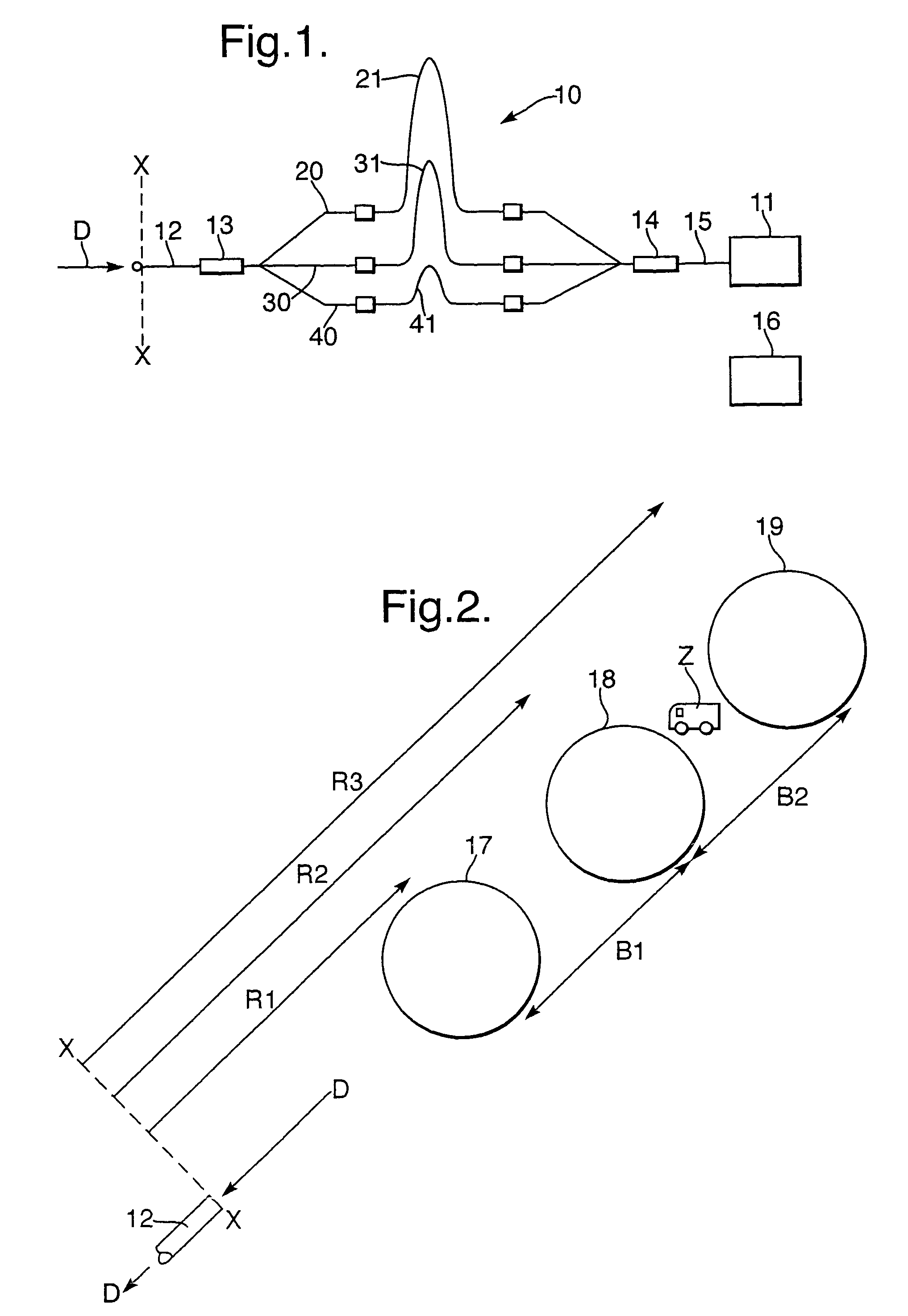Detection of an electromagnetic signal
a detection method and electromagnetic signal technology, applied in the direction of electromagnetic transmission, direction finders using electromagnetic waves, transmission, etc., to achieve the effect of extending the operational range of the signal detector, enhancing the performance of the signal detector having a low on-time, and increasing the chance of detecting an even
- Summary
- Abstract
- Description
- Claims
- Application Information
AI Technical Summary
Benefits of technology
Problems solved by technology
Method used
Image
Examples
Embodiment Construction
[0028]Signal detectors of various designs are well known in the art and have a short duty cycle. This duty cycle is commonly known as the ‘on-time’.
[0029]Minimising the on-time of a signal detector reduces detector noise, that is a background signal from the atmosphere and the clutter around an object to be detected, and increases the maximum range capability of the entire signal detection system. However, with any signal detection system, it is essential for the detector on-time to coincide with the arrival time of the signal.
[0030]With reference to FIG. 1 a signal detection system 10 comprises a single signal detector 11 having a limited on-time during which any received electromagnetic signal can be assessed, that is detected and processed. The signal detector 11 receives electromagnetic signals from a single direction in space D through a single optical fibre 12, a signal splitter 13 which splits the collected signal between three optical paths 20, 30, and 40, and a signal combi...
PUM
 Login to View More
Login to View More Abstract
Description
Claims
Application Information
 Login to View More
Login to View More - R&D
- Intellectual Property
- Life Sciences
- Materials
- Tech Scout
- Unparalleled Data Quality
- Higher Quality Content
- 60% Fewer Hallucinations
Browse by: Latest US Patents, China's latest patents, Technical Efficacy Thesaurus, Application Domain, Technology Topic, Popular Technical Reports.
© 2025 PatSnap. All rights reserved.Legal|Privacy policy|Modern Slavery Act Transparency Statement|Sitemap|About US| Contact US: help@patsnap.com



